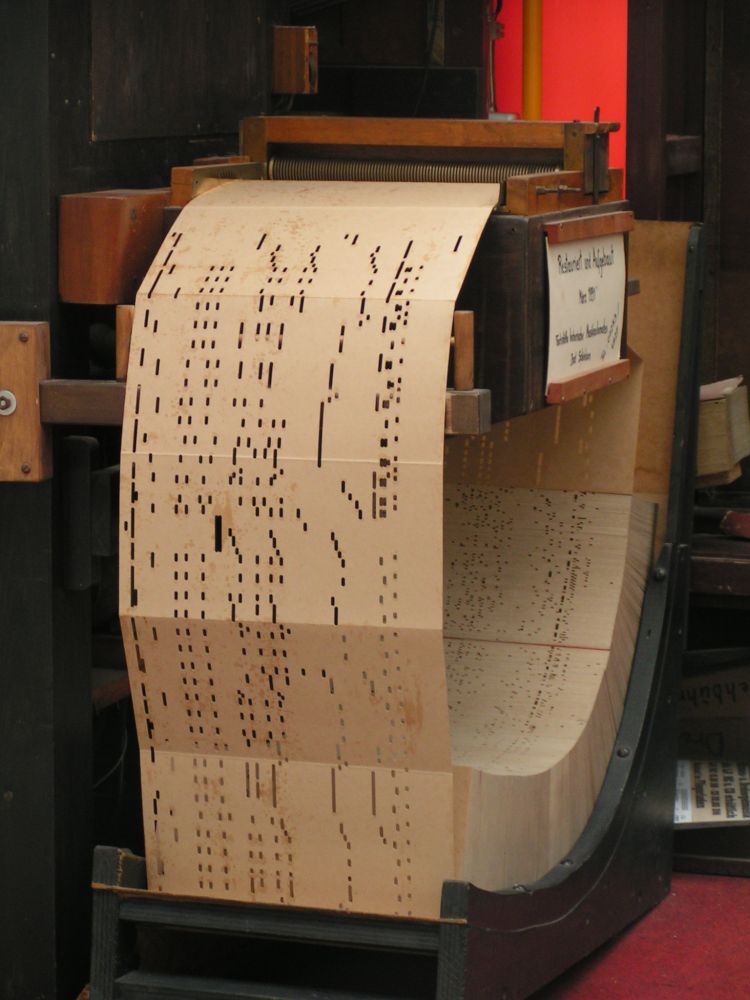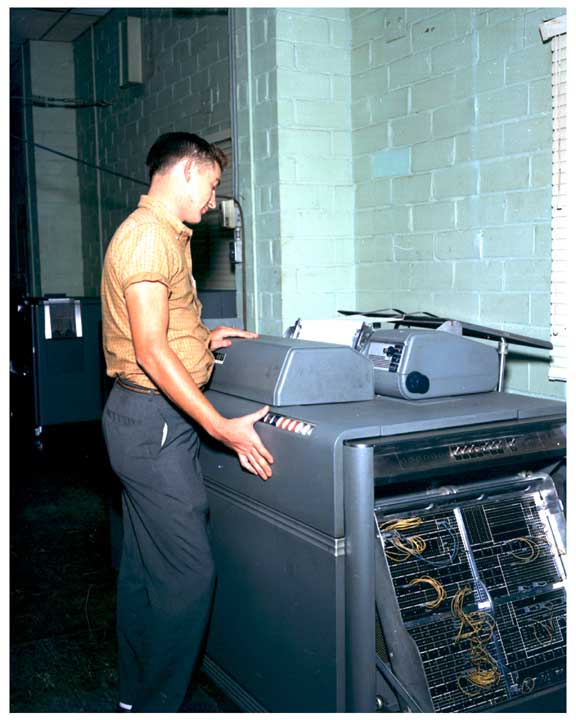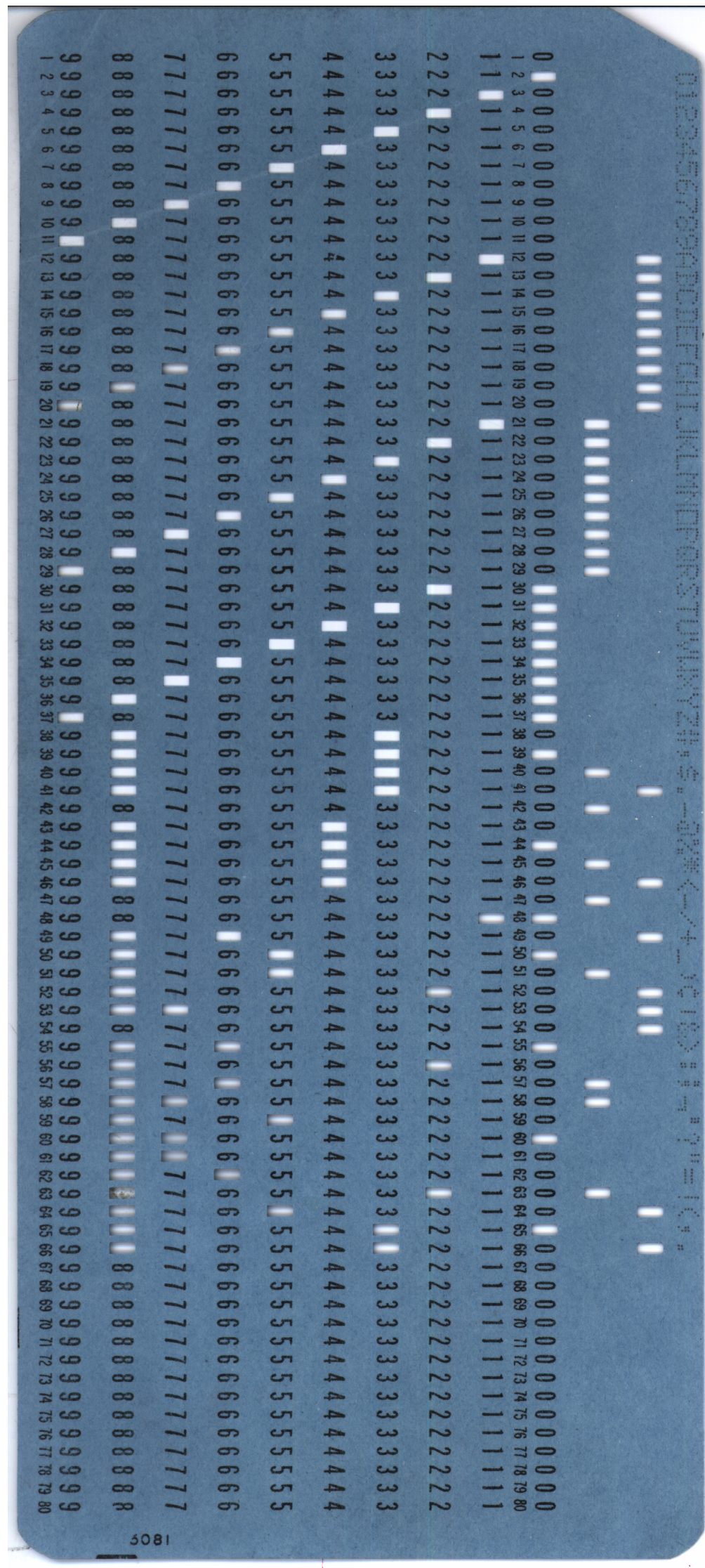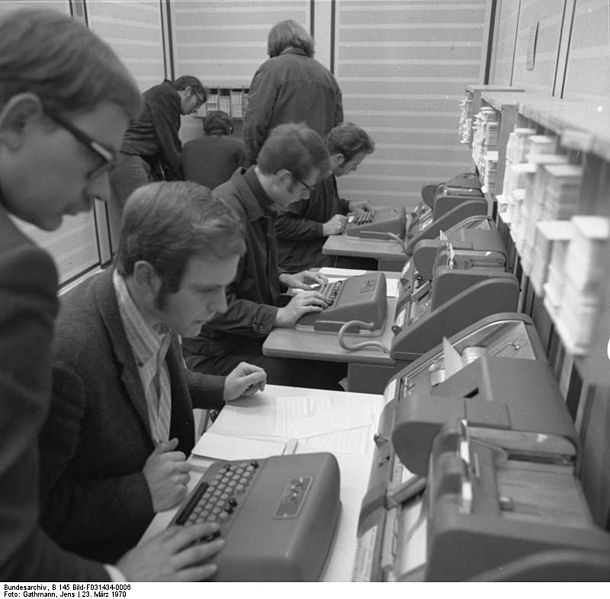ENIAC
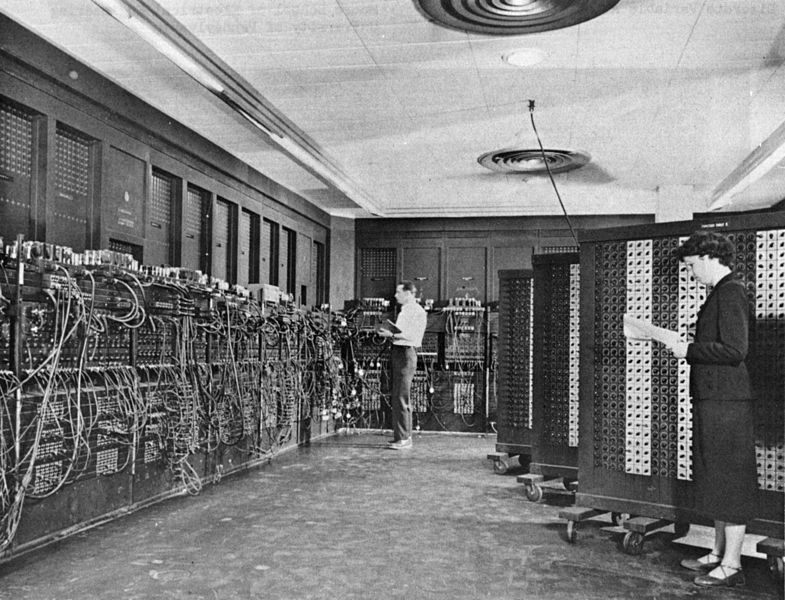
The task of taking a problem and mapping it onto the machine was complex, and usually took weeks. After the program was figured out on paper, the process of getting the program "into" ENIAC by manipulating its switches and cables took additional days. This was followed by a period of verification and debugging...
Notes
